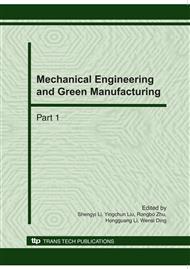p.1483
p.1488
p.1493
p.1497
p.1501
p.1507
p.1512
p.1516
p.1521
Equivalent Elastic Modulus of the Open-Cell Cellular Solids
Abstract:
The useful properties of cellular solids depend on the material from which they are made, their relative density, and their internal geometrical structure. Based on two simple models (two-dimensional honeycomb and three-dimensional prism)of cellular structures, equivalent Young’s modulus related to the relative density is derived, and the theoretical results are found to be in good agreement with experimental data of open cell aluminum foams. And the results provide evidence that the three-dimensional prism model is reasonable, which two models are approximately true at low density.
Info:
Periodical:
Pages:
1501-1505
Citation:
Online since:
October 2010
Authors:
Keywords:
Price:
Сopyright:
© 2010 Trans Tech Publications Ltd. All Rights Reserved
Share:
Citation:


